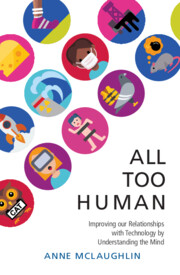Book contents
- All Too Human
- All Too Human
- Copyright page
- Contents
- Figures
- Tables
- Preface
- Acknowledgments
- Introduction
- 1 “Brace for Impact”
- 2 Bad Water
- 3 Hybrid Vigor
- 4 A Mind Divided
- 5 All the Light We Cannot See
- 6 Mistakes
- 7 History Repeating?
- 8 Needles in Haystacks
- 9 Apt Pupils and Alien Invaders
- 10 A Relative to Truth
- 11 Old Principles for New Worlds
- Conclusion
- Notes
- References
- Index
7 - History Repeating?
Published online by Cambridge University Press: 27 January 2022
- All Too Human
- All Too Human
- Copyright page
- Contents
- Figures
- Tables
- Preface
- Acknowledgments
- Introduction
- 1 “Brace for Impact”
- 2 Bad Water
- 3 Hybrid Vigor
- 4 A Mind Divided
- 5 All the Light We Cannot See
- 6 Mistakes
- 7 History Repeating?
- 8 Needles in Haystacks
- 9 Apt Pupils and Alien Invaders
- 10 A Relative to Truth
- 11 Old Principles for New Worlds
- Conclusion
- Notes
- References
- Index
Summary
The failures in Chernobyl are echoed in the stories of other accidents, such as the Challenger and Columbia explosions, the Deep Water Horizon oil spill, and the medical errors that happen every day in every hospital. After these stories of technological disaster, I move to purely human systems. The example I use is the infamous Stanford prison experiment, where fake college-student “prison guards” ran amok after just a day of playing that role, and with no regulations or oversight were on target to permanently harm the other college students, their “prisoners.” This history repeated itself with stories from Abu Ghraib (photo of the prisoner on the box), showing that when we don’t attend to all the layers of Swiss cheese, we end up with disasters again and again.
Keywords
- Type
- Chapter
- Information
- All Too HumanUnderstanding and Improving our Relationships with Technology, pp. 81 - 93Publisher: Cambridge University PressPrint publication year: 2022

